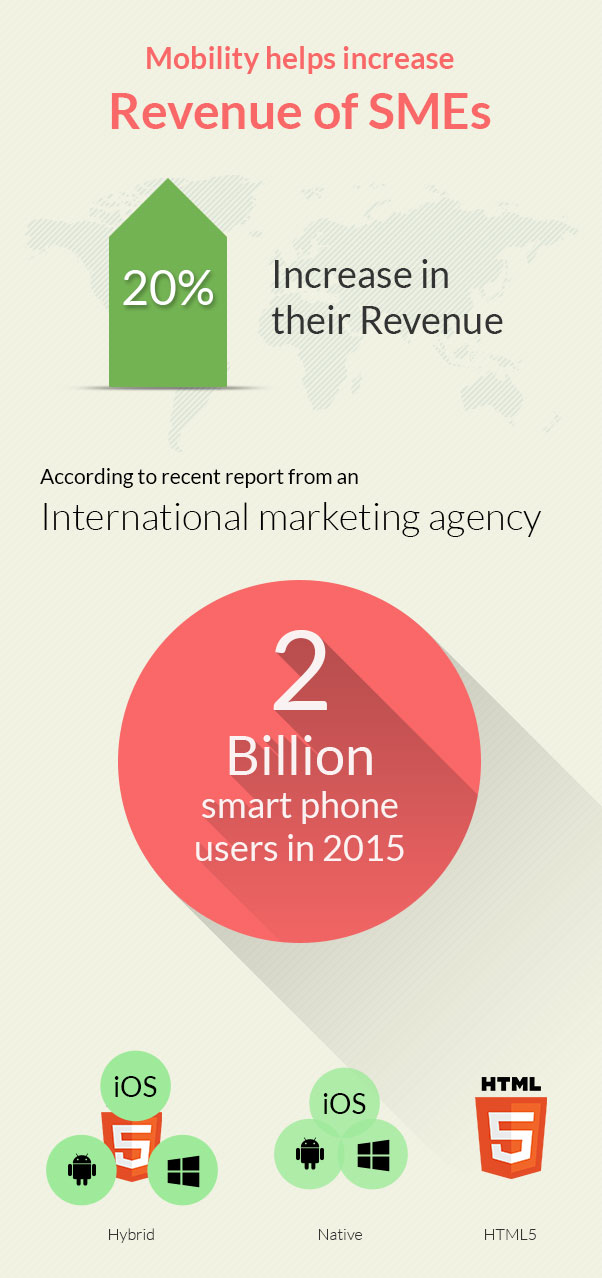Mobility

Author : TechAffinity 2nd Apr 2015
Since early 90s the usage of internet and WWW had a great impact over the corporate business, especially Small & Medium Enterprises (SME). Those who adapted early to the demanding presence over internet were able to gain market advantage and there by enjoyed the benefits in terms of revenue.
Successful SMEs were the ones who leveraged this medium as source of business by smartly generating leads out of their web presence.
They were also facilitated much though the Social Marketing Strategy that picked up a bit later, whether is to increase their Existing Customer Relationship, Bringing New Business by driving more traffic, Periodic Surveys, etc.
Now the question is, Can they sit back just reaping the benefits of previous methodologies alone? Should they adapt to latest trend? If you agree for the second question, this article will be of more interest to you.
A recent report published by an International Marketing Agency reads that the number of smart phone users will reach 2 billion in 2015. If the same is consolidated with all hand held devices, the number will be certainly encouraging. So how should the SMEs get the best out of it?
A lot of SMEs have already started to reshape their strategy by implementing mobility with social media on their Products/Company, helping them to improve their services like:
Personalized offers based on location
Customer behavior data for analytics
Dynamic user experience
Round the clock Customer Support
Social media interaction.
There are 3 standard approaches towards implementing Mobility. For someone new to this topic, a simple brief on these approaches will facilitate.
Hybrid Mobile Application Development (MEAP):
A hybrid approach, widely referred to as Mobile and Enterprise Application Platform combines both native and HTML5. This approach is commonly referred to as Write once run on multiple platforms. This hybrid application gets the device features of SDK and web technologies. It’s cost-effective and easy to maintain. There are various offerings in terms of the development platform and the widely used ones being PhoneGap/Cordova, Xamarin, Appcelarator, etc. I would say, if your application handles more of data, you can opt for this mobiity approach.
Native Application Development:
In this approach, an application is developed for the native language of the platform. One of the advantages of native application is that they generally poses better performance as it uses its underlying core libraries. The native application gives full access to device hardware to implement any kind of applications.
HTML5 Responsive
This is a simple approach to create device compatible websites and application without making huge investment. Thanks to trending HTML5, Bootstrap and Angular frameworks that simplifies the responsive development in creating web pages that can be accessible from both desktop and device browsers. Combined with MVC approach, this provides an advantage to the UI designers to play around with the CSS without much of dependency on the developers.
SMEs can choose the best approach that suits the nature of a business, their service offerings and target audience. Either of this approach has proven successful in the current market to implement mobility.
